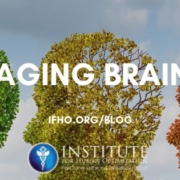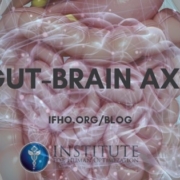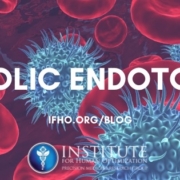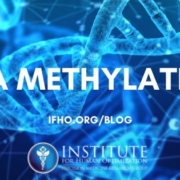WHAT IS MITOPHAGY?
Mitophagy is a process that occurs in cells, and it’s essentially the destruction of old or dysfunctional mitochondria. It’s important to know about mitophagy because as we age, our bodies lose their ability to carry out this process properly. When mitophagy does not occur properly it can lead to mitochondrial disease which has been linked to neurodegenerative diseases such as Parkinson’s disease and Alzheimer’s disease. This blog post will provide an overview of what mitophagy is and why it matters.
. . .
WHAT IS MITOPHAGY
The word ‘mitophagy’ was coined in 2007 by the researchers who discovered this process. The prefix mit- means thread and phage means eat, so we define mitophagy as the destruction of mitochondria via a cellular mechanism called autophagy. Autophagy is a process that involves the degradation and recycling of cellular components. Mitophagy is the selective kind of autophagy mechanism that removes mitochondria. A cell can digest its own organelles through this process, but it will only remove damaged structures and not healthy structures. This selective quality is what makes mitophagy so unique because most other forms of autophagy just degrade cellular components indiscriminately.
There are two other forms of autophagy: chaperone-mediated autophagy and micropexophagy. [i]
- Chaperone-mediated autophagy is a process that degrades damaged proteins and this type of degradation occurs in the lysosome or sac like structure.
- Micropexophagy on the other hand targets mitochondria for degradation.
MITOPHAGY & MITOCHONDRIA
The mitochondria is an organelle that is responsible for converting energy into a form of molecules that our cells can use.[ii] Inside the mitochondria are enzymes called electron transport chains (ETCs) which take electrons and try to pair them with hydrogen atoms to produce chemical energy. This process also creates free radicals as by products, so our cells must have an enzyme called superoxide. Superoxide dismutase (SOD) eliminates superoxides and turns them into hydrogen peroxide. Hydrogen peroxide (H2O2) is broken down by catalase and glutathione peroxidase into water and oxygen gas.
This cellular structure is responsible for helping generate ATP (Adenosine triphosphate) which stores energy in the form of phosphate bonds. Cells need ATP to get rid of excess calcium ions that build up due to metabolism, and also to open up calcium ion channels for muscle contraction. Severing of the mitochondria from the rest of a cell triggers apoptosis, which is a programmed form of cellular death. The lack of a link to other organelles and its proximity to calcium ions makes it susceptible to damage. Because of this susceptibility, cells have developed a mechanism which allows them to dispose of defective mitochondria.
HOW DOES MITOPHAGY WORK
Mitophagy is a type of autophagy and there are three steps that must occur for this mechanism to carry out successfully:[iii]
1. The first step is the creation of an isolation membrane which surrounds the mitochondria, so the rest of the cellular components aren’t degraded.
2. The isolation membrane which elicits the form of selective degradation known as mitophagy is created by a multi-protein complex called PINK1 and Parkin.
3. The last step involves the elimination of the mitochondrion through fusion with lysosomes (the cellular structure responsible for degrading other organelles) via a double membrane structure called an autophagosome.
TYPES OF MITOPHAGY
There are two types of mitophagy that exist: Macro-autophagy and Micro-autophagy.
Macroautophagy begins with the formation of an isolation membrane around the mitochondria from a multi-protein complex composed of several proteins such as Nix, Parkin, AIFm2 and FUNDC1.
This isolation membrane then fuses with a lysosome which creates an autophagosome. The autophagosomes carry the mitochondria to the cytoplasm for degradation into amino acids, fatty acids, and nucleotides.
Microautophagy is a process that creates a small isolation membrane around the mitochondria from a single protein called Ulk1. This process is often used in response to stress, but there hasn’t been direct evidence of this process occurring in mammalian cells.
HOW IS MITOPHAGY REGULATED?
A protein complex called PINK1-Parkin is believed to be the primary regulator of mitophagy. This complex is required for creating the isolation membrane that leads to mitophagy.
PINK1 has been found to regulate this process by promoting mitochondrial fission, imparting an isolation membrane around the mitochondria, and recruiting Parkin which becomes phosphorylated in response. When PINK1 is degraded or loses function through mutations, it can lead to PINK1-associated Parkinson’s disease.
Parkin is also required for mitophagy, and it acts in a parallel pathway to that of the PINK1-Parkin complex by creating an isolation membrane around mitochondria through phosphorylation of proteins involved in fission which leads to the formation of an autophagosome.
This suggests that PINK1-Parkin play a major role in the regulation of mitophagy.
MITOPHAGY IN DISEASE
Mitophagy is often found to be defective in neurodegenerative diseases such as Alzheimer’s disease, Parkinson’s disease, and Huntington’s disease[iv]. This is because faulty mitochondria are not properly eliminated, leading to cellular damage.
Since mitophagy is important in neuronal function, it follows that this process would be affected in cancer disorders. Cancer cells often have uncontrolled mitochondrial biogenesis, and this leads to extreme energy demands in cancerous cells which can be exploited. Mitochondrial biogenesis refers to the creation of new mitochondria from the division of existing ones.[v] This process is regulated by a protein complex that includes PGC1α and NRF1, which are often over-activated in tumor cells.
Cancer cells also need the ability to oxygenate themselves, so putting selective pressure on these cells through drugs that inhibit mitochondrial function can lead to their death. Inhibiting mitophagy could potentially decrease the effectiveness of such chemotherapy treatments, however research has shown that some chemotherapy drugs stimulate mitophagy so it may still have some use.
In addition, mitophagy is important for cardiovascular function and the development of stem cells. Mitochondrial biogenesis is a crucial process for stem cell formation and differentiation into progenitor cells. Mitophagy also ensures that damaged mitochondria are eliminated in cardiovascular cells.
Mitophagy is important to our longevity and healthspan because it allows the removal of faulty mitochondria that could potentially lead to cell death. Cell death leads to the death of the organism, so this process is critical for cellular health. Maintaining optimal cellular health is a key component in healthy aging, and efficient mitophagy is necessary for elimination of damaged mitochondria. We would love to see you next week on another blog post – Tune in then!
Disclaimer: The content is not intended to be a substitute for professional medical advice, diagnosis, or treatment. Additionally, the information provided in this blog, including but not limited to, text, graphics, images, and other material contained on this website, or in any linked materials, including but not limited to, text, graphics, images are not intended and should not be construed as medical advice and are for informational purposes only and should not be construed as medical advice. Always seek the advice of your physician or another qualified health provider with any questions you may have regarding a medical condition. Before taking any medications, over-the-counter drugs, supplements or herbs, consult a physician for a thorough evaluation. Always seek the advice of your physician or other qualified health care provider with any questions you may have regarding a medical condition or treatment and before undertaking a new health care regimen, and never disregard professional medical advice or delay in seeking it because of something you have read on this or any website.
[i] https://www.ncbi.nlm.nih.gov/pmc/articles/PMC5900761/
[ii] https://www.ncbi.nlm.nih.gov/pmc/articles/PMC3630798/
[iv] https://www.ncbi.nlm.nih.gov/pmc/articles/PMC7017092/
[v] https://www.ncbi.nlm.nih.gov/pmc/articles/PMC3883043/






 IfHO
IfHO





Leave a Reply
Want to join the discussion?Feel free to contribute!